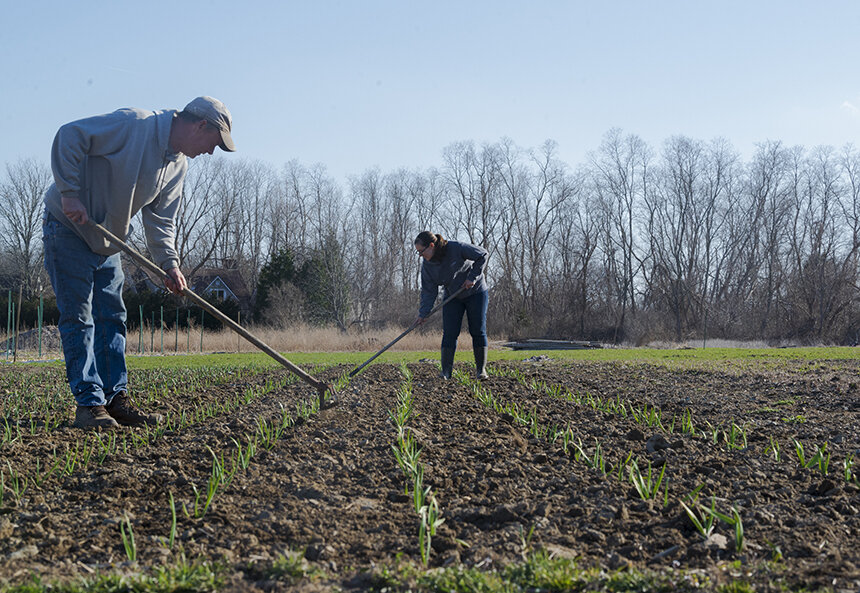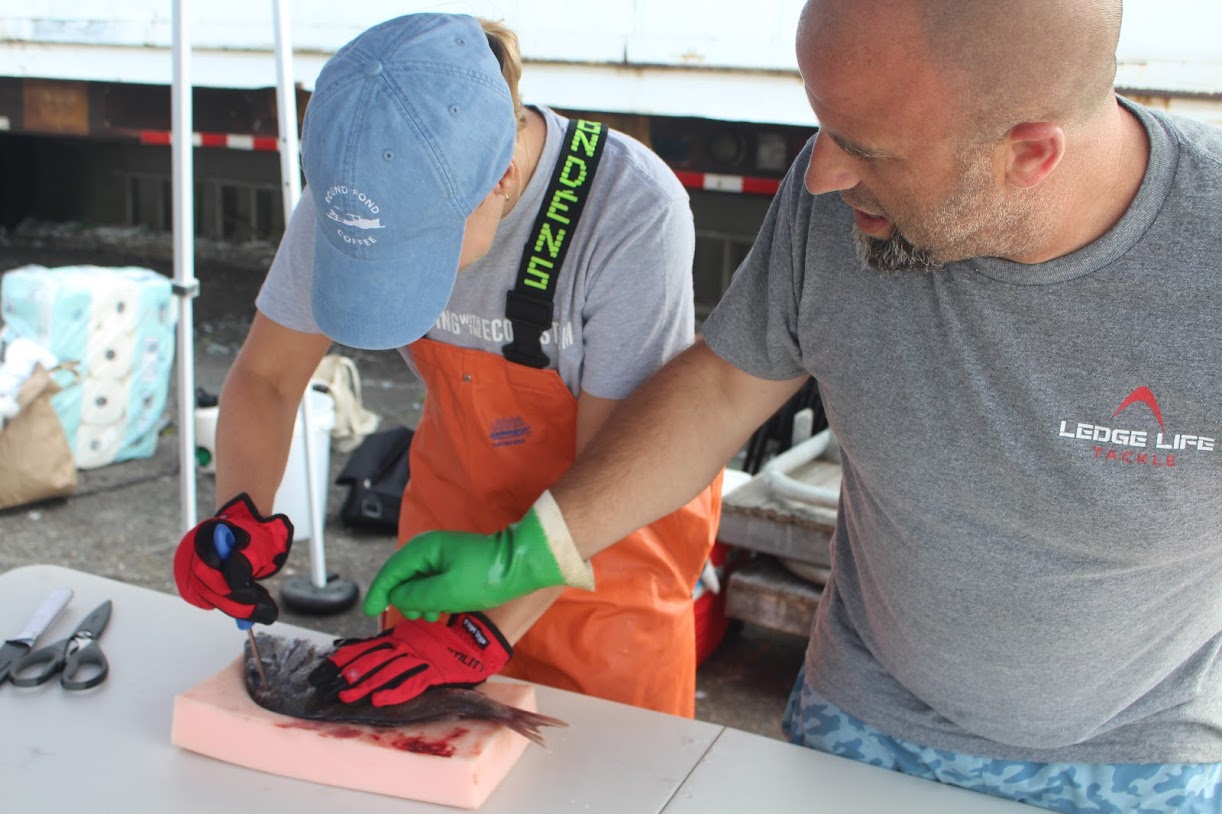New Farmers Without Connections Face Growing Pains
September 14, 2016
PROVIDENCE — When first-generation farmer Tess Brown-Lavoie tried to buy a vacant lot on the city’s West End in 2011, to start growing her own produce, she was astounded by the difficulty of the process. The land was costly, and unexpected additional expenses, such as raised beds to protect produce from the city’s lead-contaminated soil, put a further dent in her budget.
The process inched along as Brown-Lavoie weeded through the Rhode Island Department of Environmental Management’s complex permit system and negotiations with landowners. But she noted that the obstacles she encountered were far more manageable than for many new Rhode Island farmers.
Brown-Lavoie has been a part of local and national farming networks for years, and currently works for the farmer advocacy organization Land for Good and serves on the Rhode Island Food Policy Council.
“These connections were really useful,” she said. “Throughout the process I was really cognizant of how my English language skills and my whiteness have helped me, how much more people are inclined to bend the rules for me.”
For new farmers without these connections, Brown-Lavoie said, acquiring farmland as a beginning farmer can be a prohibitively difficult and time-consuming process.
According to the 2012 USDA Census of Agriculture, Rhode Island has the largest percentage of new and beginning farmers. Rhode Island also has the second-highest cost per acre for agricultural land, presenting a serious challenge to this growing population of non-landowning farmers.
Sprawling problem
These issues are hardly specific to Rhode Island. According to the American Farmland Trust, more than 40 acres of farm and ranch land are lost every hour in the United States to sprawl and development. Between 1982 and 2010, the United States developed more than 24 million acres of agricultural land — an area the size of Indiana and Rhode Island combined.
The problem is acute in Rhode Island because of the state’s small size.
“There’s very little land in Rhode Island that is rural,” said Laura Bozzi, Southside Community Land Trust’s farm, food and youth programs director. “And much of Rhode Island’s best farmland has the highest pressure for development because it’s coastal.”
Across the country, shrinking farmland has serious repercussions for access to local food. The correlation between land access and food insecurity is clear. In Rhode Island, which produces only 5 percent of its food, rates of hunger and food insecurity are the highest in New England. According to the USDA, one in seven Rhode Island households is food insecure, as compared with one in 10 in New Hampshire, where access to farmland is more widespread.
As development eats up more and more farmland, food insecurity increases. The Rhode Island Community Food Bank’s statewide network currently serves 63,000 people each month, almost twice as many as it served in 2007.
Shrinking resource
Shrinking farmland and resulting food insecurity affects people across Rhode Island but particularly those in cities, where land costs are typically the highest. Brown-Lavoie said these challenges are especially acute for people of color and refugee and migrant communities.
For example, in the West End neighborhood of Providence, where nearly 40 percent of the residents were born outside the United States, nearly a third qualify as having low food access, according to the USDA’s Food Environment Atlas.
Lack of access to farmland in these neighborhoods is not only detrimental to the physical health but also to the culture of these communities. Surveys collected earlier this year by the West Elmwood Housing Development Corporation’s Sankofa Initiative found that for most of the West End’s foreign-born population, growing food was an integral part of daily life in their countries of origin.
“People come from places where being active in food production is so important to a place where they feel like there’s a stigma around growing your own food,” said Adeline Newbold, who manages Sankofa’s World Market.
Almost three-quarters of those surveyed said gardening was very important to them, and 82 percent of those surveyed said that cultural food — often difficult to find in a supermarket — was important to them.
“We need to move away from just feeding us with food,” said Julius Kolawole, of the African Alliance of Rhode Island, which operates several community gardens in South Providence. “We need to be part of the creation of the food so we’re not just there at the end when the food is ready. You don’t know what chemicals are in the food at the supermarket and you don’t know how many miles it traveled to get there.”
Kolawole said farming can also help low-income communities save money, and can have environmental benefits such as improving soil conditions.
Making connections
Across Rhode Island, organizations and individuals are working to connect people who want to farm with land. These organizations focus their efforts on communities that currently have the lowest access to local and culturally appropriate food.
In 2013, the Sankofa initiative, with funding from the Rhode Island Department of Health, established two community gardens on formerly vacant West End plots, and connected more than 65 urban gardeners with resources and education. Sankofa is currently developing 16,500 square feet of agricultural space on West End Housing Development Cooperation Land, where the plan is to build greenhouses so farmers can extend their growing seasons.
The Southside Community Land Trust also has been instrumental in connecting Rhode Island farmers with land. The organization has established some 23 community gardens across the city’s South Side. Bozzi said the nonprofit emphasizes the importance of providing farmers not only with land but with information. Since most of the state’s agriculture takes place outside of cities, she said many people in urban environments aren’t aware that farming is an option here.
Municipal and state government has been largely supportive of the local food movement. Philip Trevvett, who is helping create a food co-op in the West End called Urban Greens, said the city of Providence has been instrumental in helping the co-op secure a space for the store, which will sell produce grown by local farmers.
The city’s program Lots of Hope, founded in 2012, has worked with the Southside Community Land Trust to transform four unused lots into urban farms. Also in 2012, the state’s Local Agriculture and Seafood Act (LASA program) began making funding available to local food/farming initiatives.
While these initiatives are certainly positive developments, Kolawole said there is far more to be done. According to Kolawole, many of the 40 families who farm in the African Alliance’s four community gardens don’t have enough room to both grow for the market and for themselves to save for winter.
Trevvett agreed that for Providence’s local farming movement to be sustainable, more land needs to be made available to farmers. He noted that if Urban Greens were to open today, the “infrastructure wouldn’t be there to get the necessary amount of produce in the store.”
As interest in farming continues to grow far beyond the resources available, farming advocates have identified a new area of potential. According to research conducted by Land for Good, nearly one-third of Rhode Island’s farms are owned and managed by farmers at or beyond retirement age. This farmland is expected to change hands in the next decade and much of it doesn’t have a planned successor.
“There’s a lot of real resistance to reimagining what agriculture can look like and what farmers can look like,” Brown-Lavoie said.
But with persistent education and outreach to farmers of different generations and backgrounds, Brown-Lavoie believes the state can hope to see new farmers, including those typically left out of traditional farming networks, making this land their own.
Categories
Join the Discussion
View CommentsYour support keeps our reporters on the environmental beat.
Reader support is at the core of our nonprofit news model. Together, we can keep the environment in the headlines.
We use cookies to improve your experience and deliver personalized content. View Cookie Settings



